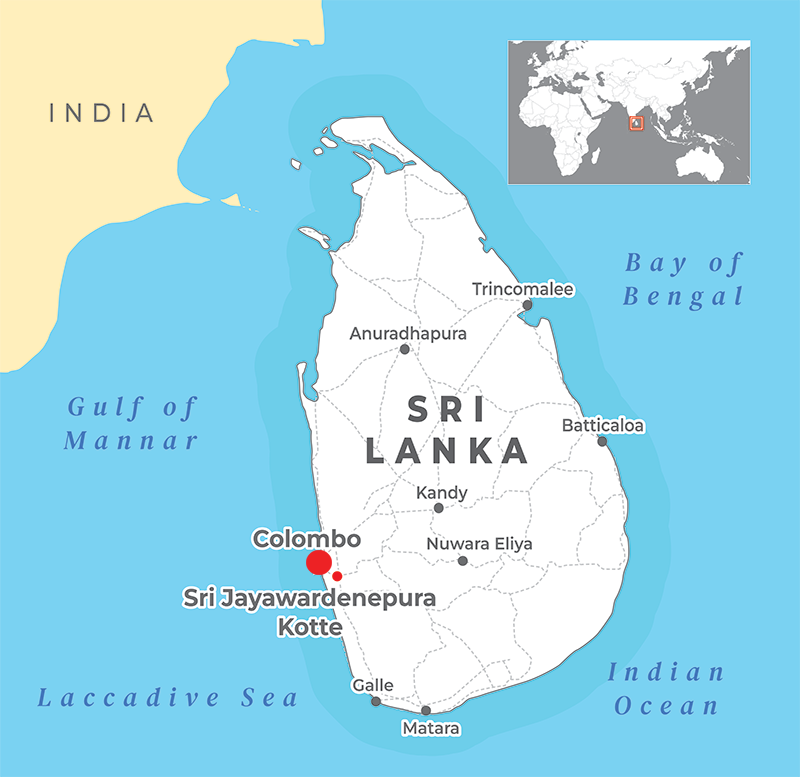Colombo, Sri Lanka

The District of Colombo spans across an area of 699 square kilometres and has a population of 2,374,461 with an estimated 49% to 51% male to female ratio (Department of Census and Statistics, 2024).
Urban areas are home to 77.6% of the population, while 22.4% reside in rural areas, according to population estimates in 2019 (Department of Census and Statistics).
Children aged 0-18 years account for 28.4% of the population in the district (2016 data). The district has a higher literacy rate than the national average for individuals aged 10 and above, standing at 96.3%, (97.3% of males and 95.5% of females) (Department of Census and Statistics, 2021).
Healthcare
The public healthcare system in the district of Colombo is a component of the country’s universal healthcare system, and provides free healthcare to all citizens.
It mainly runs promotive and preventive programmes governed by Medical Officers of Health. It is supported by a team of trained field public health staff, including a public health nursing sister, supervising public health inspector, supervising public health midwife, public health inspector and public health midwife.
A wide range of maternal and child health services is provided, including ante-natal/post-natal care, care for infants and preschool children, family planning clinics and well-woman clinics.
More about NAMASTE’s work in Sri Lanka
NAMASTE’s activities in Sri Lanka are led by the Sri Lanka College of Paediatricians (SLCP). It is the premier academic non-trade union institution in Sri Lanka that has been exclusively involved with optimal child healthcare over the last 26 years.
See more about the NAMASTE project’s work in Sri Lanka.
